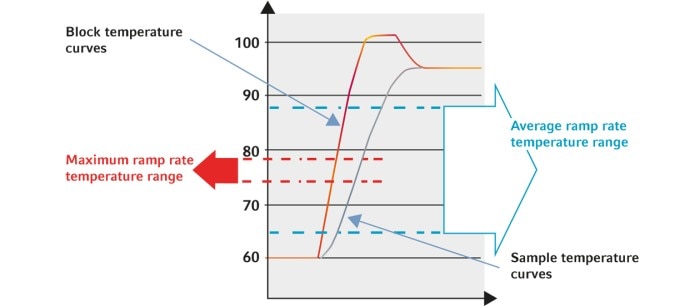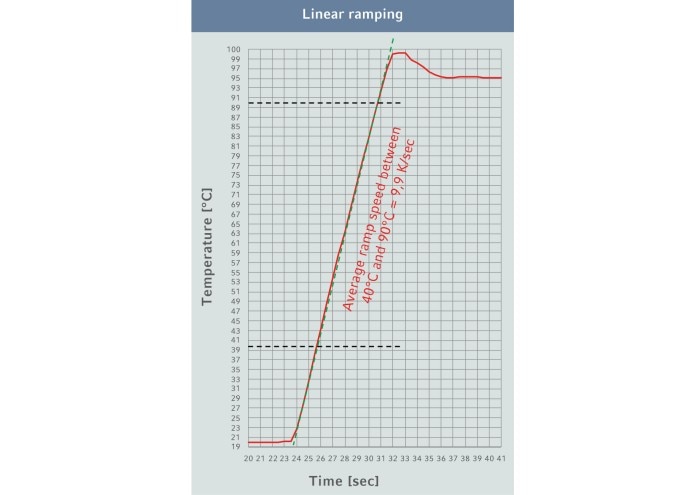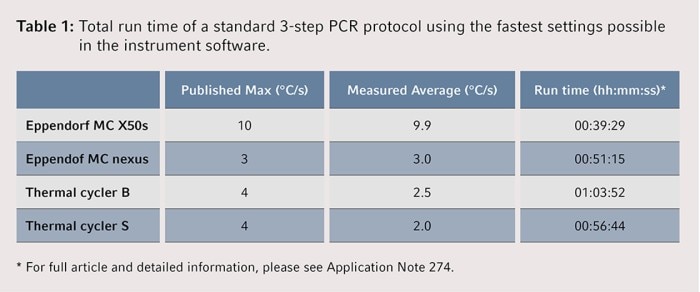MENU
GB | GBP
-
-
-
-
- Forum Labo 2025
- Advanced Therapies Week (ATW) 2025
- SLAS Europe 2025
- Bioprocessing Summit Europe 2025
- Medlab Middle East 2025
- SLAS International 2025
- Biologics World Nordics 2025
- ASIA LABEX: The Lab Show 2025
- BioProcess International Europe 2025
- ISEV 2025
- Future Labs Live 2025
- DataHow Symposium 2025
- Cell 2025
- LabDays 2025
- ASIA LABEX: The Lab Show 2025
-
-
-
-
- Forum Labo 2025
- Advanced Therapies Week (ATW) 2025
- SLAS Europe 2025
- Bioprocessing Summit Europe 2025
- Medlab Middle East 2025
- SLAS International 2025
- Biologics World Nordics 2025
- ASIA LABEX: The Lab Show 2025
- BioProcess International Europe 2025
- ISEV 2025
- Future Labs Live 2025
- DataHow Symposium 2025
- Cell 2025
- LabDays 2025
- ASIA LABEX: The Lab Show 2025
GB | GBP
-
- Benchtop Centrifuges
- Floor-Standing Centrifuges
- Refrigerated Centrifuges
- Microcentrifuges
- Multipurpose Centrifuges
- High-Speed Centrifuges
- Ultracentrifuges
- Concentrator
- IVD Products
- High-Speed and Ultracentrifuge Consumables
- Centrifuge Tubes
- Centrifuge Plates
- Device Management Software
- Sample and Information Management
-
- All Pipettes, Dispensers & Automated Liquid Handlers
- Mechanical Pipettes
- Electronic Pipettes
- Multi-Channel Pipettes
- Positive Displacement Pipettes & Dispensers
- Automated Pipetting
- Bottle-Top Dispensers
- Pipette Controllers
- Pipette Tips
- Automation Consumables
- Dispenser & Pipette Accessories
- Automation Accessories
- Dispenser & Pipette Services
No results found
Search Suggestions

PCR cycler ramp rate: Higher ramp or finish first
Lab Academy
- Molecular Biology
- Efficiency
- Amplification & PCR
- PCR Cyclers
- Essay
When I was a young and ignorant student, I’ve asked my professor this question: “Why is it that when we say we want a fast cycler, the sales representatives from different manufacturers will each answer differently with a bunch of terms and numbers for heating rates, cooling rates, max ramp rates, average PCR ramp rates, total run time, etc.? Doesn’t 1 kg of nails weigh the same as 1 kg of feathers? So, shouldn’t 5°C/s be 5°C/s whichever cycler it is? And both should then finish the same PCR program at approximately the same time?”
The older and wiser me now knows better than to compare nails and feathers side by side. Even apple to apple doesn’t work when considering the meaning of “speed” in the context of thermal cyclers.
The main reason for this is because there is no standard that a manufacturer has to follow when publishing PCR thermal cycler ramp rate.
Most thermal cycler manufacturers in the market use both, the terms “average ramp rate” and “maximum ramp rate” in their specifications. This is because the cycler does not heat or cool at the same rate along the temperature movement. In addition, most published specification only concisely prints “maximum ramp rate”. However, this figure in fact only looks nice on paper and is not a true reflection of the speed of a thermal cycler.
For example, the figure below illustrates the temperature behavior of a popular thermal cycler brand in the market. Note that in the temperature graph, the cycler heats at “average ramp rate” during the majority of the temperature range of 65-88°C. Only at 75-79°C range does the cycler run at “maximum ramp rate”. Assuming the max ramp rate to be 6°C/s, it means that the cycler only runs at 6°C ramp rate for 1 sec in each PCR step. How can one claim that the speed of the thermal cycler to be 6°C/s then?
The main reason for this is because there is no standard that a manufacturer has to follow when publishing PCR thermal cycler ramp rate.
Most thermal cycler manufacturers in the market use both, the terms “average ramp rate” and “maximum ramp rate” in their specifications. This is because the cycler does not heat or cool at the same rate along the temperature movement. In addition, most published specification only concisely prints “maximum ramp rate”. However, this figure in fact only looks nice on paper and is not a true reflection of the speed of a thermal cycler.
For example, the figure below illustrates the temperature behavior of a popular thermal cycler brand in the market. Note that in the temperature graph, the cycler heats at “average ramp rate” during the majority of the temperature range of 65-88°C. Only at 75-79°C range does the cycler run at “maximum ramp rate”. Assuming the max ramp rate to be 6°C/s, it means that the cycler only runs at 6°C ramp rate for 1 sec in each PCR step. How can one claim that the speed of the thermal cycler to be 6°C/s then?
Read more
Read less

Figure 1: Real block and sample temperature curves from all six zones during up ramp on thermal cycler brand P. The dotted lines indicate the temperature range sampled for the maximum ramp rate and the average ramp rate (source: Applied Biosystems Application Note).
So, what should I look for if I want a fast PCR thermal cycler?
Well, it depends on “why” exactly you are looking for a fast cycler.
Are you looking for a PCR cycler with the highest ramp rate possible?
Or a wide range of ramping so that you have more flexibility when ramp rate adjustment is needed in your protocol?
Or are you looking for a cycler that can finish your PCR faster so that you can complete more work? Or to free up a cycler for other users in the lab?
If your concern is on PCR ramp rates, then a better understanding on how ramp rates are reported in each manufacturer’s specifications can help you in making the right choice.
Any thermal cycler brand that uses the term “maximum ramp rate” or have another parameter named “average ramp rate” reflects that the cycler does not heat or cool at a constant rate. While this is common behavior for most cyclers in the market, a thermal cycler does not actually need to behave this way. This is a matter of technology.
Thermal cyclers with linear ramping technology have no differentiation in their ramping rates. Only one figure is needed for each heating and cooling rate respectively. This single figure is representative of the major part of the ramping curve (Figure 2A).
Well, it depends on “why” exactly you are looking for a fast cycler.
Are you looking for a PCR cycler with the highest ramp rate possible?
Or a wide range of ramping so that you have more flexibility when ramp rate adjustment is needed in your protocol?
Or are you looking for a cycler that can finish your PCR faster so that you can complete more work? Or to free up a cycler for other users in the lab?
If your concern is on PCR ramp rates, then a better understanding on how ramp rates are reported in each manufacturer’s specifications can help you in making the right choice.
Any thermal cycler brand that uses the term “maximum ramp rate” or have another parameter named “average ramp rate” reflects that the cycler does not heat or cool at a constant rate. While this is common behavior for most cyclers in the market, a thermal cycler does not actually need to behave this way. This is a matter of technology.
Thermal cyclers with linear ramping technology have no differentiation in their ramping rates. Only one figure is needed for each heating and cooling rate respectively. This single figure is representative of the major part of the ramping curve (Figure 2A).
Read more
Read less

Figure 2A: temperature heating profile of Eppendorf Mastercycler X50

2B: temperature heating profile of thermal cycler brand S
In contrast, a thermal cycler that does not have linear ramping technology heats at different rates throughout the ramping curve. There are two problems one can infer from this.
Firstly, the variable PCR ramp rate itself. Such temperature behavior can affect PCR results for systems that are sensitive to reaction speed, and it also makes it difficult to transfer a PCR program from one thermal cycler to another thermal cycler of a different brand, since there is no way to determine the exact ramp to follow.
For further reading: The paper Widespread use of incorrect PCR ramp rate negatively impacts multidrug-resistant tuberculosis diagnosis (MTBDRplus) published by Dr. Grant Theron’s group cautioned on the impact of ramp rate on PCR results.
Secondly, the actual ramp rate would be lower than published, which means the cycler is slower than what you would expect it to be (Table 1).
So, if your purpose behind getting a “fast cycler” is that you could finish a PCR faster, or run more PCRs, or free up the booking schedule so that it is more convenient for multiple users, then looking at the ramp rates specifications would not necessarily help you. In fact, it is rather misleading!
This is especially true even when referencing the “measured average ramp rate”. As this also might not reflect the actual runtimes of PCR protocols. In the example in Table 1, thermal cycler B has a higher measured average ramp rate than thermal cycler S but is obviously slower than thermal cycler S. This might be due to other factors that affect temperature behavior, such as degree of overshoot/ undershoot. Temperature control modes and/or reaction volume settings may also exert different degree of influence on ramping behavior of different thermal cyclers.
Hence, what you should really be looking at is the total PCR run time (Table 1) as this would be a better representation of speed.
Firstly, the variable PCR ramp rate itself. Such temperature behavior can affect PCR results for systems that are sensitive to reaction speed, and it also makes it difficult to transfer a PCR program from one thermal cycler to another thermal cycler of a different brand, since there is no way to determine the exact ramp to follow.
For further reading: The paper Widespread use of incorrect PCR ramp rate negatively impacts multidrug-resistant tuberculosis diagnosis (MTBDRplus) published by Dr. Grant Theron’s group cautioned on the impact of ramp rate on PCR results.
Secondly, the actual ramp rate would be lower than published, which means the cycler is slower than what you would expect it to be (Table 1).
So, if your purpose behind getting a “fast cycler” is that you could finish a PCR faster, or run more PCRs, or free up the booking schedule so that it is more convenient for multiple users, then looking at the ramp rates specifications would not necessarily help you. In fact, it is rather misleading!
This is especially true even when referencing the “measured average ramp rate”. As this also might not reflect the actual runtimes of PCR protocols. In the example in Table 1, thermal cycler B has a higher measured average ramp rate than thermal cycler S but is obviously slower than thermal cycler S. This might be due to other factors that affect temperature behavior, such as degree of overshoot/ undershoot. Temperature control modes and/or reaction volume settings may also exert different degree of influence on ramping behavior of different thermal cyclers.
Hence, what you should really be looking at is the total PCR run time (Table 1) as this would be a better representation of speed.
Read more
Read less

* For full article and detailed information, please see Application Note 274
So, the ball is in your court. What exactly are you looking for? What is your need behind getting the fastest cycler in the market?
PCR thermal cycler with high ramp rates? Or faster PCR completion?
References:
Derendinger, B., de Vos, M., Nathavitharana, R.R. et al. Widespread use of incorrect PCR ramp rate negatively impacts multidrug-resistant tuberculosis diagnosis (MTBDRplus). Sci Rep 8, 3206 (2018).
So, the ball is in your court. What exactly are you looking for? What is your need behind getting the fastest cycler in the market?
PCR thermal cycler with high ramp rates? Or faster PCR completion?
References:
Derendinger, B., de Vos, M., Nathavitharana, R.R. et al. Widespread use of incorrect PCR ramp rate negatively impacts multidrug-resistant tuberculosis diagnosis (MTBDRplus). Sci Rep 8, 3206 (2018).
Read more
Read less
